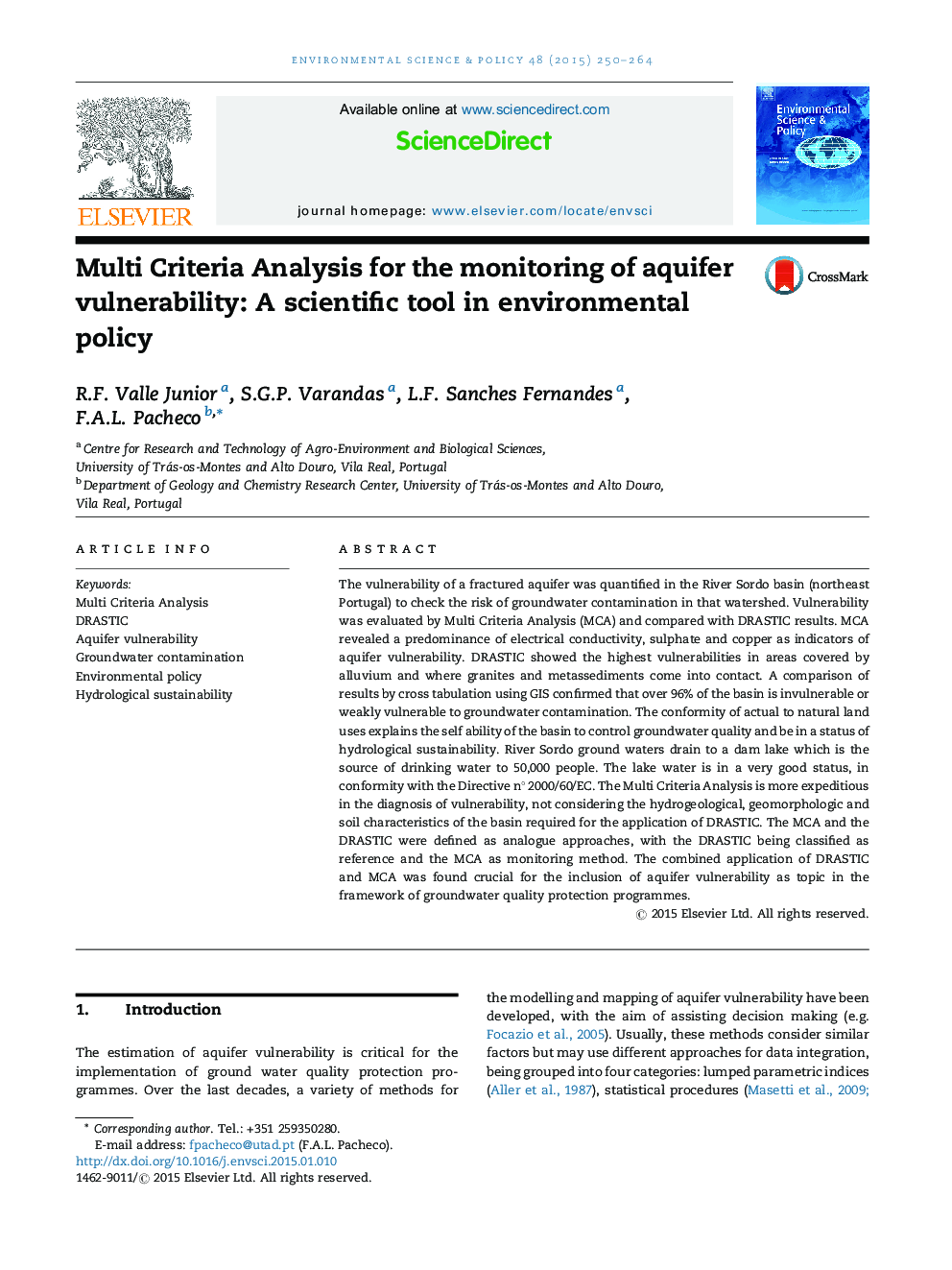| Article ID | Journal | Published Year | Pages | File Type |
|---|---|---|---|---|
| 7467572 | Environmental Science & Policy | 2015 | 15 Pages |
Abstract
The vulnerability of a fractured aquifer was quantified in the River Sordo basin (northeast Portugal) to check the risk of groundwater contamination in that watershed. Vulnerability was evaluated by Multi Criteria Analysis (MCA) and compared with DRASTIC results. MCA revealed a predominance of electrical conductivity, sulphate and copper as indicators of aquifer vulnerability. DRASTIC showed the highest vulnerabilities in areas covered by alluvium and where granites and metassediments come into contact. A comparison of results by cross tabulation using GIS confirmed that over 96% of the basin is invulnerable or weakly vulnerable to groundwater contamination. The conformity of actual to natural land uses explains the self ability of the basin to control groundwater quality and be in a status of hydrological sustainability. River Sordo ground waters drain to a dam lake which is the source of drinking water to 50,000 people. The lake water is in a very good status, in conformity with the Directive n° 2000/60/EC. The Multi Criteria Analysis is more expeditious in the diagnosis of vulnerability, not considering the hydrogeological, geomorphologic and soil characteristics of the basin required for the application of DRASTIC. The MCA and the DRASTIC were defined as analogue approaches, with the DRASTIC being classified as reference and the MCA as monitoring method. The combined application of DRASTIC and MCA was found crucial for the inclusion of aquifer vulnerability as topic in the framework of groundwater quality protection programmes.
Keywords
Related Topics
Physical Sciences and Engineering
Energy
Renewable Energy, Sustainability and the Environment
Authors
R.F. Valle Junior, S.G.P. Varandas, L.F. Sanches Fernandes, F.A.L. Pacheco,
